Small commercial vans (Under 2.5-tonne GVM) are well suited to full electric drivetrains. Given their relatively small payload ratings and external dimensions, these vans are ideal for light short-haul deliveries in congested urban settings, as they can easily negotiate narrow city laneways and squeeze into tight delivery parking zones. And all with zero tailpipe emissions.
French manufacturers are spearheading small electric vans in Australia, with Peugeot having introduced its E-Partner in 2023 belatedly followed in mid-2024 by Renault with its new E-Tech based on its third-generation Kangoo.
We recently spent a week aboard the latest electrified Renault workhorse to see if it has what it takes to offer a compelling alternative to traditional petrol/diesel rivals.
-
Is this the coolest electric car yet? Renault shows off retro '70s 17-inspired 200kW rear-wheel drive EV coupe concept that could make production
-
Renault could be one of the best-selling car brands in Australia if it sold the hybrid Renault Koleos, Captur and Clio to take on the Toyota RAV4 Hybrid, Yaris Hybrid and Yaris Cross Hybrid as it does in Europe | Opinion
-
$10,000 truth about electric cars: Tesla Model Y rivalling Renault Megane E-Tech's $10,000 price cut to be permanent
Renault Kangoo 2024: E-Tech Swb Ev45
| Engine Type | Not Applicable, 0.0L |
|---|---|
| Fuel Type | Electric |
| Fuel Efficiency | 0.0L/100km (combined) |
| Seating | 2 |
| Price From | $56,650 - $65,120 |
Does it represent good value for the price? What features does it come with?
7 / 10
The Kangoo E-Tech is available in short wheelbase (SWB) or long wheelbase (LWB) configurations.
Our test vehicle is the SWB version in standard 'Mineral White' paint, which shares the same front-wheel-drive powertrain as its LWB sibling consisting of a single electric motor, single-speed automatic transmission and 45kWh lithium-ion battery for a list price of $61,990.
That’s $2K more than its Peugeot E-Partner Pro Long Auto rival and a whopping $20K more than its Kangoo SWB Petrol 1.3L EDC sibling. Our example is also fitted with the ‘smart’ rear-view mirror option ($800) which projects a sharp digital image from a rear-facing camera.
The E-Tech’s standard equipment list includes work-focused 16-inch steel wheels and 205/65R16 tyres. However, it misses out on a full-size spare like petrol Kangoos, instead relying on a tyre inflation kit.
.jpg)
There’s also auto-door lock when driving, rain-sensing wipers, dusk-sensing headlights, reversing camera, rear parking sensors and audible alert for pedestrians.
Inside is a solid bulkhead separating the cabin and cargo bay and the driver gets a synthetic leather-feel steering wheel with height/reach adjustment and a colour 4.2-inch information display.
There’s also an electronic parking brake, two USB ports, two 12-volt sockets and a multimedia system controlled by an 8.0-inch central touchscreen with wireless Apple CarPlay and Android Auto connectivity and a smartphone dock.
Renault also offers numerous option packs including Business Pack, Trade Pack and Peace of Mind Pack (see Driving) plus numerous single options including different cargo bay sliding-door configurations, a 200kg GVM upgrade and more.
Is there anything interesting about its design?
8 / 10
The SWB E-Tech rides on a 2716mm wheelbase with MacPherson strut front suspension, coil-spring rear suspension, rack and pinion steering and four-wheel disc brakes.
Its compact external dimensions of 4488mm length, 1859mm width and 1830mm height are well suited to space-restricted areas, albeit with a 11.3-metre turning circle that’s lineball with the shortest HiAce mid-sized van.
Externally the E-Tech appears well armoured for work duties, with its prominent use of unpainted dark grey plastic for the hubcaps, front and rear bumpers and along its flanks, to best deflect the bumps and scrapes often inflicted on these areas in hard-working vans.
.jpg)
Its contemporary exterior design is matched by an equally modern and work-focused interior, with two fabric-covered bucket seats, wipe-clean vinyl floors and a tasteful blend of grey and black surfaces that create a pleasant working environment.
The E-Tech’s unique instrument panel has a multi-function energy gauge in place of the rev-counter found in petrol models and its battery charging port is located behind the large Renault ‘diamond’ badge in the centre of the grille.
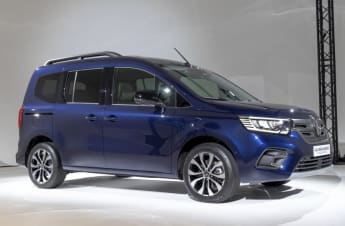
How practical is its space and tech inside?
8 / 10
With its 1707kg tare weight and GVM 2230kg, the SWB E-Tech has a 523kg payload rating, so it’s a genuine half-tonner.
It’s also rated to tow up to 1500kg of braked trailer. And with its 3730kg GCM (or how much it can legally carry and tow at the same time) it can haul its maximum payload while towing its maximum trailer weight, which is impressive.
The cargo bay, which offers 3.3 cubic metres of load volume, is accessed through sliding doors on each side with (by our measure) 625mm openings, or through asymmetric barn-doors at the rear. Both can be opened to 180-degrees to enhance forklift and loading dock access.
The load area is 1806mm long and 1590mm wide with 1248mm between the rear-wheel housings, so it can carry one standard Aussie pallet or two Euro pallets, held in place by a choice of six floor-mounted load-anchorage points.
.jpg)
A protective load floor-liner is available as an accessory, the walls and doors are lined to mid-height and there’s internal lighting.
The front doors open to a full 90 degrees, providing conspicuously wide access. The cabin has a spacious and airy feel, even for someone my height (186cm) thanks to a high roof height relative to the seating position, plus ample leg and elbow room.
The solid bulkhead, which doubles as a cargo barrier, insulates the cabin from most cargo bay noise and minimises demand on the climate control air-con, which thankfully provides three physical dials rather than the distraction of touchscreen prompts when adjusting settings.
Cabin storage includes a large bottle holder and bin in the base of each door, plus a sizeable clamshell-lidded compartment in the dash-pad ahead of the driver. This incorporates a handy smartphone holder, which can be moved to either side depending on driver preference.
There’s also a large open storage area in the centre of the dash-pad plus a full-width overhead shelf, single glovebox and a centre console containing two cupholders and open trays for small items.
.jpg)
Our only criticisms are the lack of hinge detents or struts to hold the rear barn-doors open in their 180-degree positions, given that a gust of wind when loading/unloading can slam them shut with potential injury for the operator.
We also think full-electric vans need to provide dedicated storage for their charging cables, as they are often treated as an afterthought.
For example, our E-Tech’s bulky public-charging cable was coiled up between the bulkhead and passenger seat backrest. This required the seat base to be slid about 50mm further forward to accommodate it, resulting in reduced passenger backrest angle and legroom.
Other test vehicles have been supplied with these cables sitting on the passenger floor, stuffed into overhead shelving etc which are all unsatisfactory locations for such an important piece of equipment.
.jpg)
What are the key stats for its motor?
8 / 10
The E-Tech’s single electric motor produces 90kW of power and 245Nm of torque and drives the front wheels through a single-speed transmission.
It offers an energy-saving ‘Eco’ mode plus three regenerative braking modes comprising low (B1), medium (B2) and high (B3). These are sequentially selected using the gearshift, with each mode shown on the driver’s information display.
.jpg)
What is its driving range? What is its charging time?
8 / 10
Renault claims a WLTP-certified driving range of 286km from the E-Tech’s 45kWh lithium-ion battery mounted under the load floor.
We completed a total distance of 249km, part of which was hauling a near-maximum payload. We often switched between Normal and Eco modes.
At the completion of our test, the dash display was claiming average consumption of 15.1kWh/100km, so based on that figure the claimed driving range is credible in ‘real world’ usage.
.jpg)
We topped up the battery charge each night using a Renault-supplied portable charger, which plugged into a domestic wall socket and charged at a rate of around 1.7kWh per hour.
Renault claims charging times of around 2 hours 25 mins with a 22kW AC charger, which shortens to around 1 hour 25 mins for vehicles equipped with an optional 80kW DC on-board charger.
What’s it like to drive?
8 / 10
The fabric-covered seats are comfortable, with side bolstering that provides good lateral support, but there’s no adjustable lumbar in the backrests.
The optional ‘smart’ digital rear-view mirror proves its worth by avoiding the thick panel between the two bulkhead windows which substantially blocks the view for a conventional mirror.
The ride quality feels typically European, with a nice balance between the firmness needed for responsive handling and suppleness needed to soak up the bumps. Steering feel is excellent and braking response is strong, particularly when high regenerative braking (B3) is selected requiring minimal use of the brake pedal.
The substantially higher tare weight of the E-Tech (almost 300kg), compared to its SWB Kangoo petrol sibling, is largely due to its battery pack. However, this big increase in sprung weight also contributes to a smoother unladen ride quality.
.jpg)
Acceleration from standing starts is deceptive, given the silence of the electric motor and its instant torque which gets this 1700kg van moving with considerable ease and faster than you initially appreciate.
Its response in energy-saving Eco mode is more subdued obviously, but performance with this reduced power output is still adequate for most driving tasks.
This included hauling a near-maximum payload on our congested 50km city and suburban test route, for which this vehicle would be best suited. We forklifted 325kg into the cargo bay, which with our crew of two equalled a total payload of just over half a tonne (505kg).
.jpg)
The stout rear coil springs only compressed 20mm under this loading, with minimal effect on steering or braking. Acceleration was not as brisk, as you’d expect, but remained more than adequate given the heavy payload it was carrying.
Fact is, few (if any) owners would load an E-Tech to its GVM limit, but it’s reassuring to know it can competently haul such a load if required.
Our only criticisms are that the driver’s left footrest is too narrow, as it only supports the outside half of a decent-sized Aussie boot.
The other is the absence of blind-spot monitoring as standard equipment (see Safety) in a solid-walled van like this, which has a huge blind-spot over the driver’s left shoulder.
Warranty & Safety Rating
What safety equipment is fitted? What safety rating?
7 / 10
The Kangoo doesn't have an ANCAP rating but it does come equipped with driver and passenger front and side airbags plus auto emergency braking (AEB) with pedestrian, cyclist and junction detection, lane-keeping, rear parking sensors and reversing camera. Desirable active features like blind-spot monitoring, adaptive cruise control, front and side parking sensors etc are only available as part of optional packs.
.jpg)
What warranty is offered? What are its service intervals? What are its running costs?
8 / 10
The E-Tech is backed by a five-year/100,000km warranty, with five years complimentary roadside assist. The lithium-ion battery has its own eight-year/160,000km/minimum 70 per cent capacity warranty, whichever occurs first.
Scheduled servicing is every 12 months/30,000km. Renault does not publish service pricing for the E-Tech but claims that "average servicing costs for an EV are around 30 per cent lower than for a comparable combustion engine on the capped-price servicing program".
Verdict
This vehicle would be well suited to short-haul city and suburban working roles, given its zero tailpipe emissions, compact size, useful driving range, half-tonne payload and energetic performance.
Ideally, it would also have access to back-to-base overnight charging at home or depot rather than having to rely on the inconvenience of public charging, which could be a deal-breaker for some – along with its high purchase price.
Therefore, careful consideration should be given to determine if a petrol or electric Kangoo is best suited to your requirements and budget.
Pricing Guides







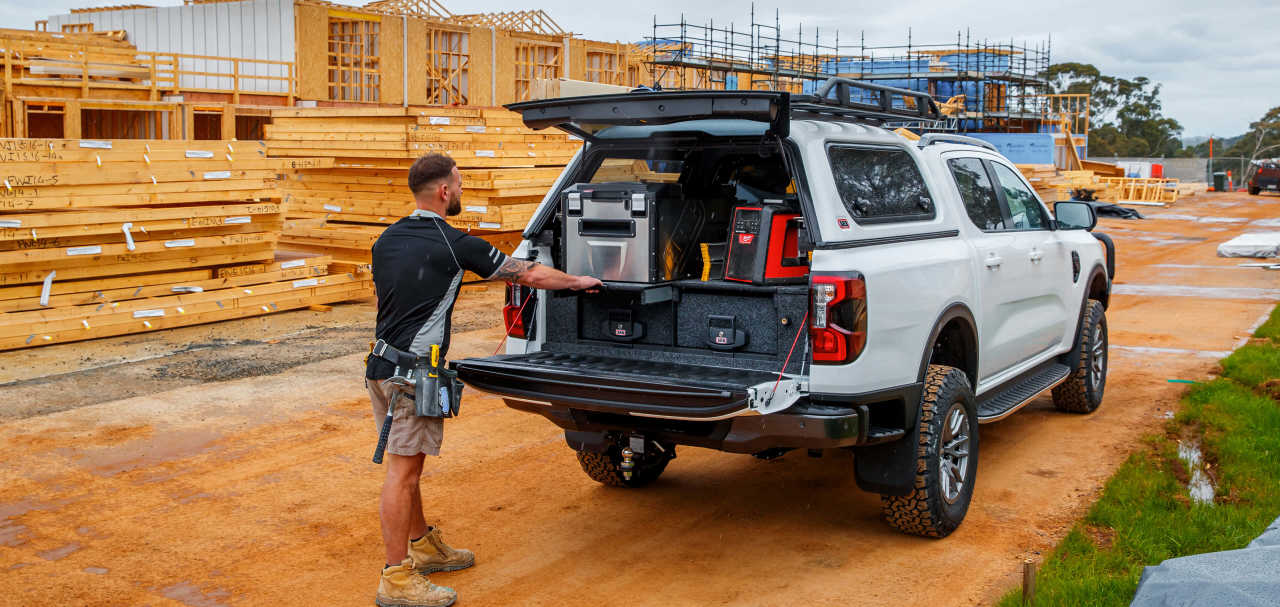
.jpg)
.jpg)
.jpg)
.jpg)
.jpg)
.jpg)
.jpg)
.jpg)
.jpg)
.jpg)
.jpg)
.jpg)
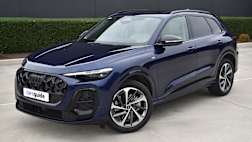

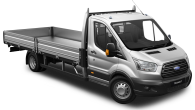


.png)

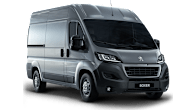
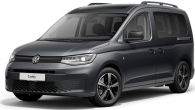

.jpg)
.jpg)
.jpg)